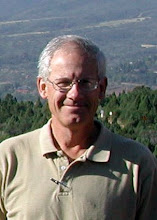In the early 1980's, while working for Allied Chemical Corporation in Hopewell, Virginia, I had extraordinary freedom to quench my thirst for "why things go wrong."
Since I was living about 2 hours from Washington D.C. at the time, I was able to travel there often. I visited museums, the National Archives, as well as NASA and National Transportation Safety Board (NTSB) headquarters.
In my reading of formal investigative reports, I became especially interested in the NTSB, the way they are structured, the way they investigate incidents, and the obstacles they encounter. I remember calling them up one day, asking if I could interview one of their leaders, simply to learn about how they did things. I didn't know if they'd accept my request, but they did.
When I arrived, I was met by Thomas DeW. Styles, the Director of Accident Investigation for the National Transportation Safety Board. I had no idea they'd let me talk to the Director. I spent hours with this man, who allowed me to tape our conversation. I left with 3 volumes of books describing the workings of the NTSB, as well as about 50 pages of eventually transcribed notes, and a personal invitation to come to an upcoming open proceeding in New York City about a recent railroad incident.
One of the things I learned from Tom Styles was the emphasis they place on the "Go Concept."
The following text has been copied from http://www.ntsb.gov/abt_ntsb/invest.htm. I am copying it here because sometimes these links become inactive or out of date.
From the above NTSB link:
The NTSB "Go Team"
At the core of NTSB investigations is the "Go Team." The purpose of the Safety Board Go Team is simple and effective: Begin the investigation of a major accident at the accident scene, as quickly as possible.....
During their time on the "duty" rotation, members must be reachable 24 hours a day by telephone at the office or at home, or by pager. Most Go Team members ..... have tools of their trade handy -- carefully selected wrenches, screwdrivers and devices peculiar to their specialty. All carry flashlights, tape recorders, cameras, and lots of extra tape and film.
The Go Concept has been part of Failsafe's training ever since.
Failsafe acknowledges three major forms of evidence. We call them "The 3 P's:
People know things, the Physical manifestation tells us things, and history (Paper) can tell us things. (People, Physical, and Paper).
From the NTSB, Failsafe also acknowledges that all 3 forms of evidence is evaporative. It is very similar to dry ice, which starts to evaporate immediately on exposure to abient conditions.
All facilities that are sincere about learning from things that go wrong ought to have Go Teams, with Go Bags. I consider the presence of these "teams" and "bags" a litmus test for the sincerity of these kind of efforts.
In a future post, I will share the BEST Go-Box I have ever seen. It was assembled by an investigator operating out of a refinery.
Tuesday, February 16, 2010
The NTSB's Go Concept
Labels:
3 Ps,
evidence,
Go Bag,
Go Box,
Go Concept,
Litmus Test,
NTSB,
Tom Styles
Subscribe to:
Post Comments (Atom)

No comments:
Post a Comment